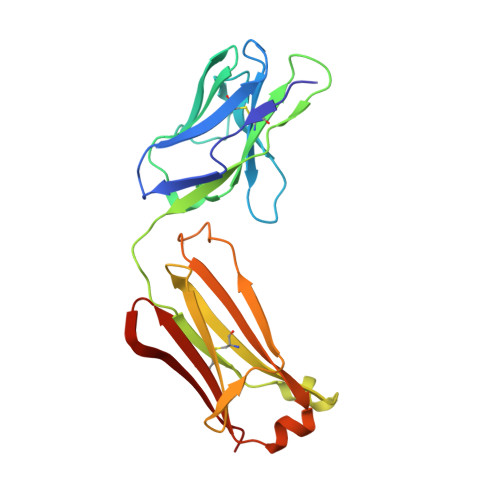Open and Closed Structures of a Barium-Blocked Potassium Channel.
Rohaim, A., Gong, L., Li, J., Rui, H., Blachowicz, L., Roux, B.(2020) J Mol Biology 432: 4783-4798
- PubMed: 32615129
- DOI: https://doi.org/10.1016/j.jmb.2020.06.012
- Primary Citation of Related Structures:
6W0A, 6W0B, 6W0C, 6W0D, 6W0E, 6W0F, 6W0G, 6W0H, 6W0I, 6W0J - PubMed Abstract:
Barium (Ba 2+ ) is a classic permeant blocker of potassium (K + ) channels. The "external lock-in effect" in barium block experiments, whereby the binding of external K + impedes the forward translocation of the blocker, provides a powerful avenue to investigate the selectivity of the binding sites along the pore of potassium channels. Barium block experiments show that the external lock-in site is highly selective for K + over Na + . Wild-type KcsA was crystallized in low K + conditions, and the crystals were soaked in solutions containing various concentrations of barium. Structural analysis reveals open and closed gate conformations of the KcsA channel. Anomalous diffraction experiments show that Ba 2+ primarily binds to the innermost site S4 of the selectivity filter of the open-gate conformation and also the site S2, but no binding is detected with the closed-gate conformation. Alchemical free-energy perturbation calculations indicate that the presence of a Ba 2+ ion in the selectivity filter boosts the specificity of K + binding relative to Na + in the external sites S0-S2.
- Department of Biochemistry and Molecular Biology, University of Chicago, Gordon Center for Integrative Science, 929 E 57th St, Chicago, IL 60637, USA; Department of Biophysics, Faculty of Science, Cairo University, Giza 12613, Egypt.
Organizational Affiliation:


















